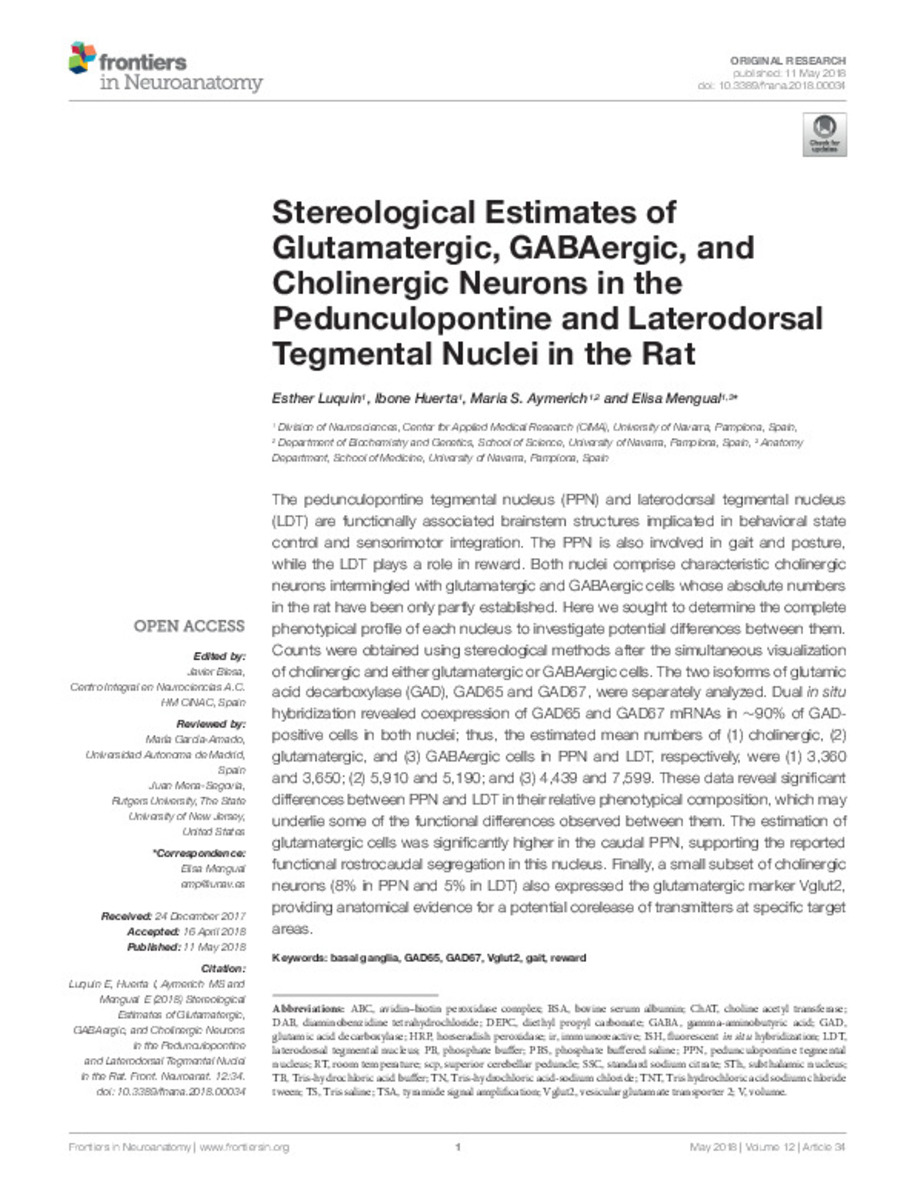Stereological estimates of glutamatergic, GABAergic, and cholinergic neurons in the pedunculopontine and laterodorsa tegmental nuclei in the rat
Keywords:
GAD65
GAD67
Vglut2
Basal ganglia
Gait
Reward
Publisher:
Frontiers Media
Note:
This is an open-access
article distributed under the terms of the Creative Commons Attribution License
(CC BY). The use, distribution or reproduction in other forums is permitted, provided
the original author(s) and the copyright owner are credited and that the original
publication in this journal is cited, in accordance with accepted academic practice.
No use, distribution or reproduction is permitted which does not comply with these
terms.
Citation:
Luquin, E. (Esther); Huerta, I. (Ibone); Aymerich, M.S. (María S.); et al. "Stereological estimates of glutamatergic, GABAergic, and cholinergic neurons in the pedunculopontine and laterodorsa tegmental nuclei in the rat". Frontiers in neuroanatomy. 12, 2018, 34
Statistics and impact
0 citas en

Items in Dadun are protected by copyright, with all rights reserved, unless otherwise indicated.







